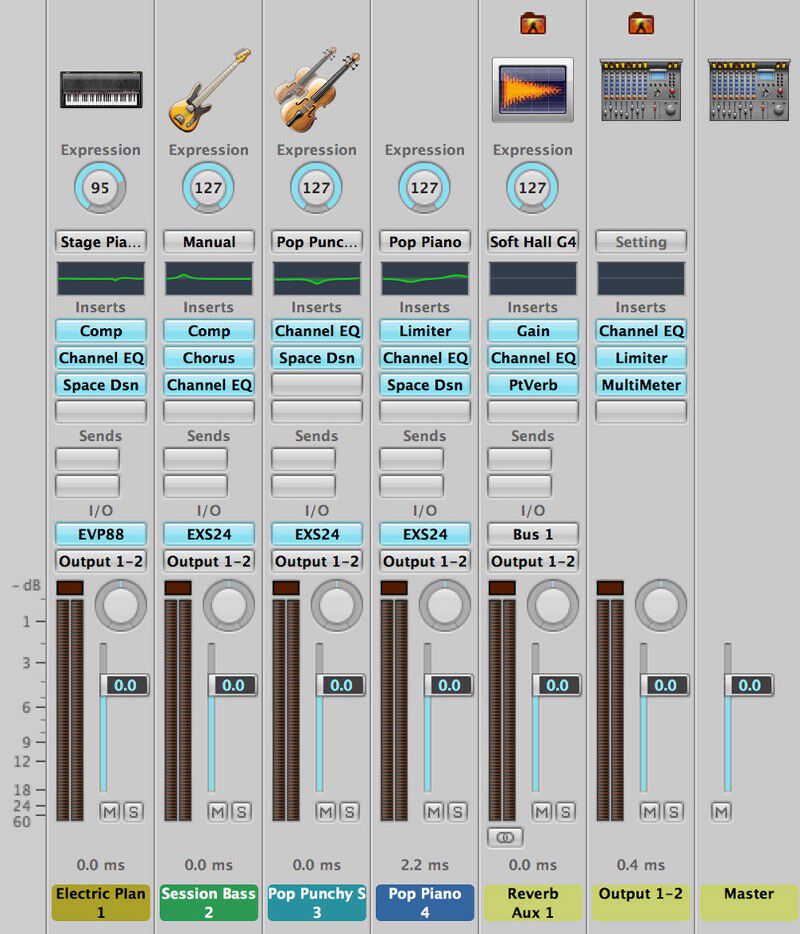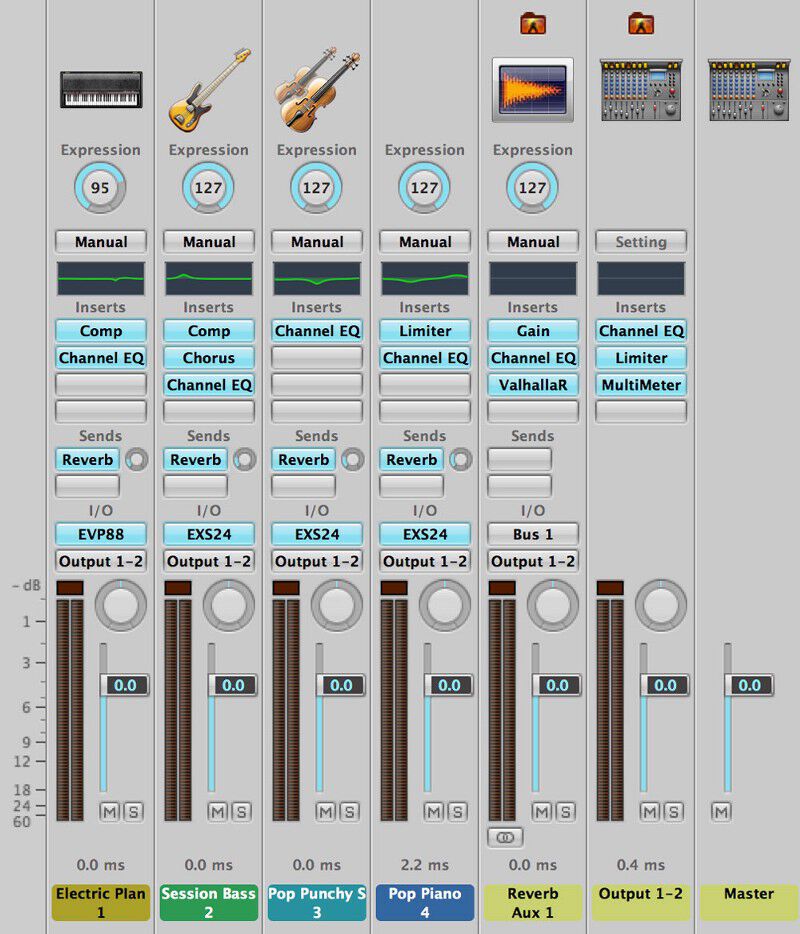When programming sound patches for musical theatre productions, one should strive for efficiency. A CPU and RAM footprint is integral to the stability of Apple MainStage. Reverb, short of reverberation, is the repetition of a sound as a result of sound waves reflecting off different surfaces. Many people refer to reverb as “echo,” Regardless of what you want to call it, reverb plugins eat up CPU power. Take a look at the following screenshot.

Each instrument channel strip, except the bass, has an insertion effect called “Space Designer,” This is one of MainStage’s included reverb plugins. Why do we need a unique “Space Designer” instance for each instrument, when a global reverb uses less CPU power and puts all your instruments in the same “sonic environment”? I don’t know.
Before creating a global reverb, make sure you get rid of the reverb effect that is already present on the instrument channel strips. Right click on “Space Designer” and select “No Plug-In,” Now we can move on to creating a global reverb.
- Create an aux channel strip for the global reverb. (If you’re using one of MainStage’s preset templates, there’s a good chance there is already an reverb aux channel strip set up for you. Feel free to change the reverb plugin to one of your choosing. If you see “Reverb Aux 1” in your channel strips, move on to Step 3.
- In order to set up a reverb aux channel strip, add an aux channel strip, select a reverb plugin in the “Inserts” section of the channel strip, and set the input of the aux channel strip to a “Bus,” The rest of the tutorial will assume “Bus 1” is the reverb bus.
- For each instrument you wish to send to the reverb bus, right click on the box under “Sends,” and create a send to “Bus 1,” Adjust the amount of signal to send using the circular meter. My reverb sends usually end up being around 20.
Your channel strips should now look something like this. I decided to change the reverb plugin on my aux reverb channel strip to “Valhalla Room”. It’s a wonderful reverb plugin!

Using a global reverb is a great way to reduce CPU and RAM usage. Always remember to delete all reverb plugins on instrument channel strips before applying a global reverb, and never create a send on the actual reverb aux channel strip.